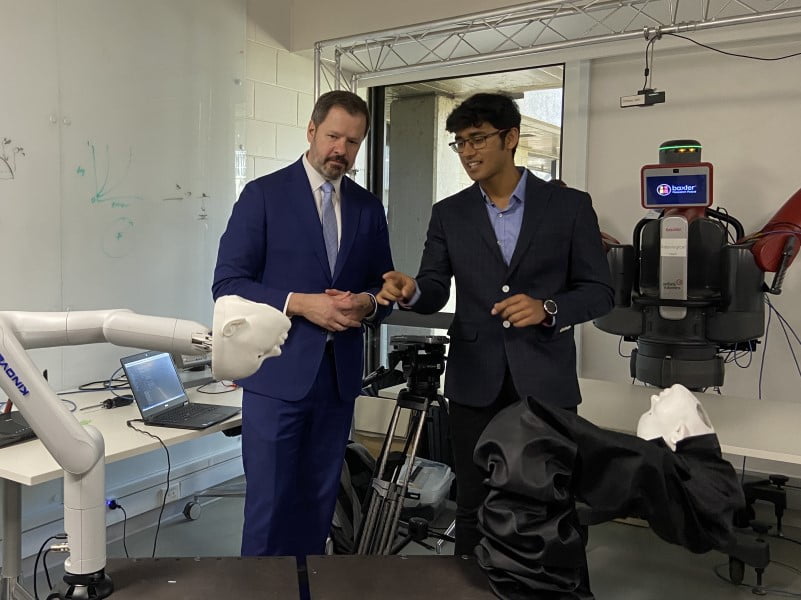Industry and Science minister Ed Husic has opened up consultations on the development of Australia’s first National Robotics Strategy, which is expected to include a focus on filling robotics supply chain gaps and increasing adoption.
Mr Husic launched a discussion paper on Wednesday to inform the strategy, which had been expected to be finalised in March. The paper estimates automation technologies will add between $170 billion and $600 billion annually to Australia’s GDP by 2030.
While the government has not committed additional funding to the strategy, Mr Husic told InnovationAus.com that the $1 billion for critical technologies earmarked in the National Reconstruction Fund is is a “huge layer of capital”.
Mr Husic also said the government is “committed to maintaining existing funding around commercialisation” and would “make further announcements down the track”.
Regarding the delay in finalising the strategy, he said that “sometimes the ambition oversteps the ability to achieve”.

There are four broad areas of focus for the Albanese government’s robotics strategy: national capability, trust, inclusion and responsible development and use, skills and diversity, and increasing adoption.
Supporting the components and capabilities in the manufacture of robotics will also support the wider tech ecosystem including AI, computer vision, advanced materials, and batteries, according to the discussion paper.
In particular, it highlights the productivity boosting potential from increased robotics adoption to boost productivity in across resources, transport, medical science, renewables and low emission technologies, and agriculture, forestry, and fisheries.
Cobotics — which the discussion paper defines as “robotic systems designed to collaborate and interact with humans within a shared space” — is also expected to be a focus of the strategy.
Australia ranks highly for research impact in robotics, in areas such as autonomous systems operation technology, advanced robotics and drones, and swarming and collaborative robots, however research and industry find it difficult to commercialise their innovations, according to the paper.
While Australia also ranked seventh for venture capital availability in advanced robotics it is a tiny fraction of that available in the United States, China, and Israel.
There is a low volume of patent applications in Australia. Between 2015 and 2019, there were 72 patents filed in Australia, while there were more than 9600 in China and just under 3200 in the United States.
Australia also lags in adoption of robotics, ranking 30th in the world for annual installations of industrial robots in 2021, according to the International Federation of Robotics. Robotics Australia says the country’s robot population density per 10,000 employees is 75, which is around 34 per cent less than the world average of 113.
Development of the Robotics Strategy is being led by the National Robotics Strategy Advisory Committee, which is chaired by CSIRO chief scientist Bronwyn Fox. Alongside the forthcoming national quantum strategy, Mr Husic wants the robotics strategy to be “factored into the thinking of the board of the National Reconstruction Fund”.
Mr Husic also said Australia’s robotics opportunities are “not just an economic benefit, there’s a social one as well, and in some cases environmental” that will be supported when the strategy is finalised, including in health, environmental sustainability, and data analytics.
Submissions on the discussion paper will be open until May 7. Several in-person workshops and online sector-specific workshops will be held across April and May.
The sectors being consulted specifically through the workshops are:
- Manufacturing and construction
- Mining, resources, transport, and logistics
- Defence, space, and aerospace
- Agriculture and blue economy
- Environment and emergency management
- Science, healthcare, medical, and services
Do you know more? Contact James Riley via Email.

